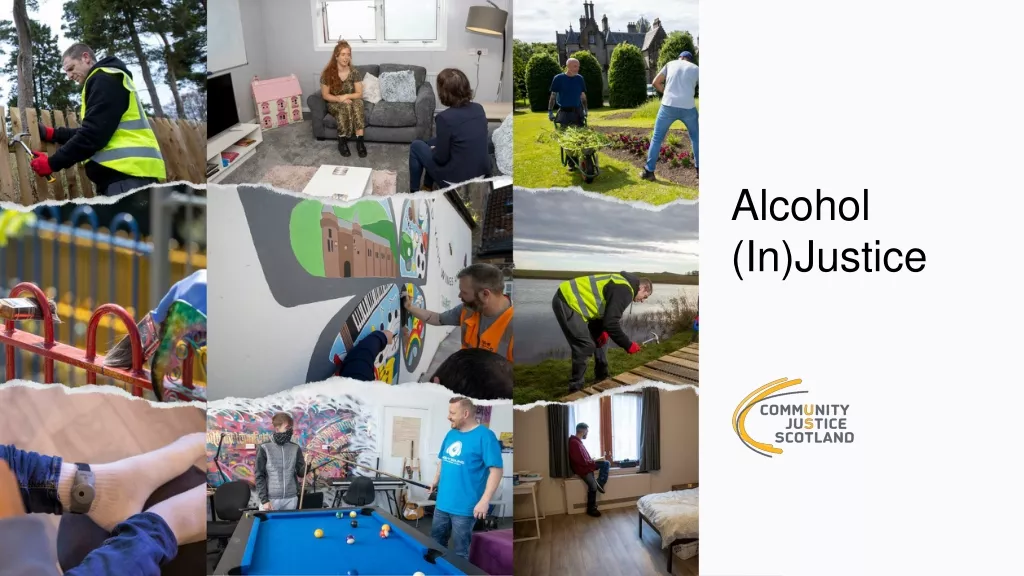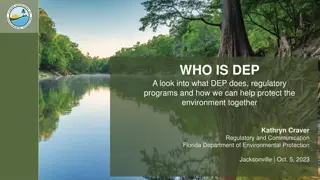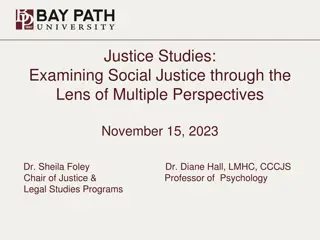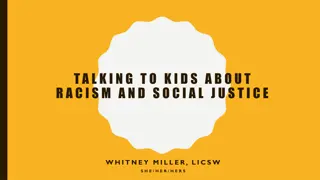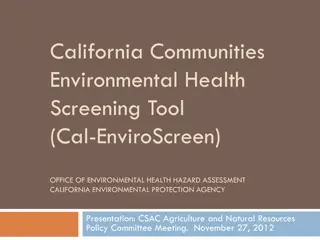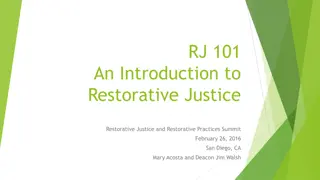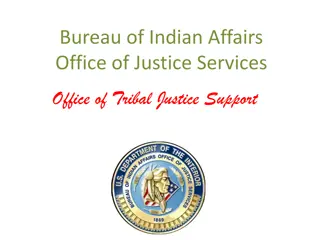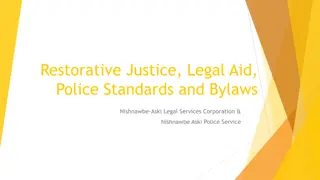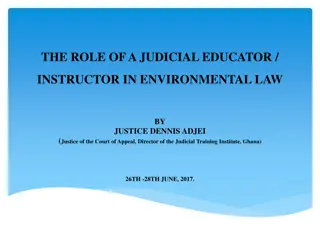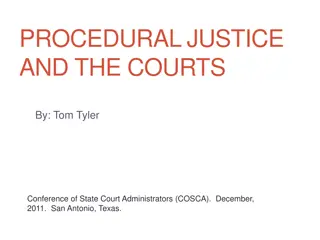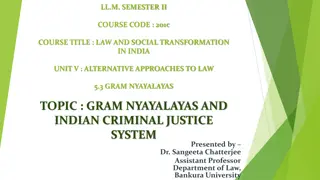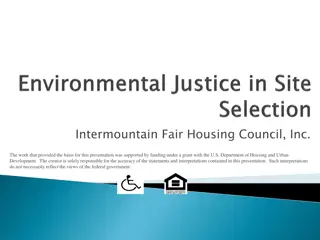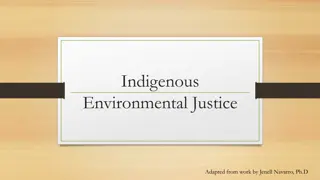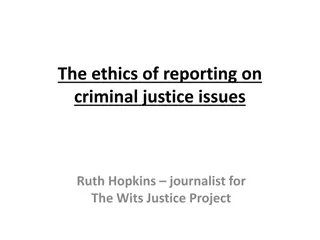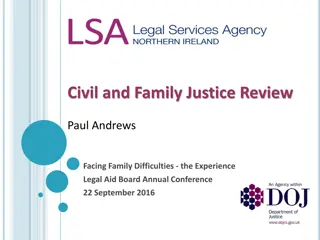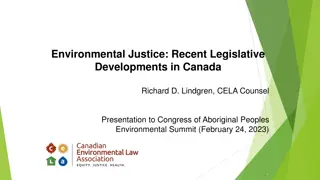Understanding Environmental Justice and Student Activities
Engage students in learning about environmental justice through classroom presentations with interactive activities. The slideshow provides instructions for student presenters, tips for successful public speaking, and an introduction to environmental justice. Explore the concept of environmental justice, its importance, and ways to take action to promote fairness in environmental policies and decision-making processes. Enhance student learning by incorporating discussions and reflections on how to address environmental inequalities.
Download Presentation

Please find below an Image/Link to download the presentation.
The content on the website is provided AS IS for your information and personal use only. It may not be sold, licensed, or shared on other websites without obtaining consent from the author. Download presentation by click this link. If you encounter any issues during the download, it is possible that the publisher has removed the file from their server.
E N D
Presentation Transcript
Student Activities: Environmental Justice
Instructions for the Student Activities This slideshow is designed for classroom presentations. You will need to adapt some of the activities based on the class you re presenting in and how much time you have. Each activity has three unique steps. Activities take about 10 minutes to present, but we recommend timing them when you practice. If you only have time for a 5-minute presentation, consider turning the Take Action section into questions for participants to think about after you leave. Remember, you will need to include a description of your campaign and an invitation to join STF to your presentation. Plan ahead to build that into your classroom presentation.
Instructions for Student Presenters Recommendations for how to use these materials to successfully give a classroom presentation: 1. Timing: Know ahead of time how long the teacher has given you to present! Then practice and adjust accordingly. 2. Learn the presentation: Don t try to give a presentation without looking through it. Review it multiple times to learn the flow and make adjustments that only you as a facilitator can make. For example, inviting students to talk to each other in pairs vs. as a whole group, etc. Don t forget to delete red facilitator notes we left for you! 3. Practice: Did we mention practicing?? You MUST practice before presenting to a classroom! You want to give a good impression and stay within the time. Take time in an STF chapter meeting to get feedback and make sure everyone is comfortable with the presentation.
Instructions for Student Presenters Continued Public speaking tips for how to present these materials to a classroom: 1. Don t just read the slides! Practice and familiarize yourself enough with the activity that you can speak about it without simply reading the slides the whole time. (It s okay to read some things, just not everything. ) 2. Use the notes section to put things you don t want to forget while you re speaking! 3. Speak up: Practice annunciating clearly through your mask so everyone will hear you. 4. Slow down: When we re nervous we tend to speak very quickly. Take deep breaths and practice speaking slowly. 5. Be honest: If someone asks a question you don t know the answer too, it s okay to say, I m not sure, I m not the expert. If you come to our next STF meeting, I can try to get the answer for you by then or follow up with your teacher to share it later.
Activity One: What is Environmental Justice?
What is Environmental Justice: Introduction From the EPA: Environmental justice is the fair treatment of all people regardless of race, color, national origin, or income, with respect to environmental laws and policies. This goal will be achieved when everyone enjoys: The same protection from environmental health hazards Equal access to the decision-making process to have a healthy environment in which to live, learn, and work.
What is Environmental Justice: Video Discussion What did you notice in this video? What surprised you? How have you experienced or seen environmental justice issues in your school/community?
What is Environmental Justice: Take Action Note to facilitator: There are Take Action options on this slide. Choose one or more actions before your presentation, then delete the rest and this note! Write or discuss how you ve seen or experienced environmental justice issues in your school/community Write or discuss what you want to learn about environmental justice Write an environmental justice pledge (how you want to fight for environmental justice)
Additional resources to dive deeper: Note to facilitator: Plan ahead if and how you want to use these resources. Build them in to extend the presentation or share with the teacher so they can send them to their students later. Delete this note before your presentation! LA County Health Dept: Data on LA environmental justice issues LA Times: Environmental justice in Los Angeles
Activity Two: Climate Migrants
Climate Migrants: Introduction What are some of the reasons that people move? What are some of the reasons that people move?
Climate Migrants: Introduction From Climate Reality: Climate Migration is the movement of a person or people who, predominantly for reasons of sudden or progressive change in the environment due to climate change, are obliged to leave their habitual place of residence, or choose to do so, either temporarily or permanently, within a State or across an international border. From Climate Reality: Climate Migration is the movement of a person or people who, predominantly for reasons of sudden or progressive change in the environment due to climate change, are obliged to leave their habitual place of residence, or choose to do so, either temporarily or permanently, within a State or across an international border.
Climate Migrants: Video Discussion What stood out to you in this video? How might future climate change induced weather and disasters put your region or community at risk? What should be done to address this issue? What stood out to you in this video? How might future climate change induced weather and disasters put your region or community at risk? What should be done to address this issue?
Climate Migrants: Take Action Note to facilitator: There are Take Action options on this slide. Choose one or more actions before your presentation, then delete the rest and this note! Write or discuss your/family s migration story and compare it to that of climate migrants Write or discuss what you want to learn more about related to climate migration Write or discuss the similarities or differences in why people move
Additional resources to dive deeper: Note to facilitator: Plan ahead if and how you want to use these resources. Build them in to extend the presentation or share with the teacher so they can send them to their students later. Delete this note before your presentation! NY Times: Global climate migration interactive map How climate change impacts migration along the US Southern border Examples from Central American migrants
Activity Three: Los Angeles Oil Drilling
LA Oil Drilling: Introduction If you had to guess, how many oil wells would you say are in Los Angeles? If you had to guess, how many oil wells would you say are in Los Angeles?
LA Oil Drilling: Introduction Today there are over 20,000 active, idle or abandoned wells spread across a county of 10 million people. About one-third of residents live less than a mile from an active well site, some right next door. Today there are over 20,000 active, idle or abandoned wells spread across a county of 10 million people. About one-third of residents live less than a mile from an active well site, some right next door.
LA Oil Drilling: Video Prep Copy the chart below and use it to take notes while you watch the video. Arguments to remove oil wells Arguments to keep oil wells
LA Oil Drilling: Video Discussion Which side of your chart had better arguments? What side do you agree with? Why? Which side of your chart had better arguments? What side do you agree with? Why? Arguments to remove oil wells Arguments to keep oil wells
LA Oil Drilling & You Scan this QR code, then type in your address. How close do you live to an oil well? Does your proximity to an oil well affect your opinion about whether they should be removed? Why or why not? Note: Not all wells on the map are active. Idle oil wells still emit toxins if not closed properly. Scan this QR code, then type in your address. How close do you live to an oil well? Does your proximity to an oil well affect your opinion about whether they should be removed? Why or why not? Note: Not all wells on the map are active. Idle oil wells still emit toxins if not closed properly.
LA Oil Drilling: Take Action Note to facilitator: There are Take Action options on this slide. Choose one or more actions before your presentation, then delete the rest and this note! Write or discuss how you ve been impacted by oil drilling or other environmental factors Write or discuss your hopes and fears about oil drilling in Los Angeles Write or discuss what you want to learn LA oil fields
Additional resources to dive deeper: Note to facilitator: Plan ahead if and how you want to use these resources. Build them in to extend the presentation or share with the teacher so they can send them to their students later. Delete this note before your presentation! Health problems related to oil drilling LA County takes first steps to end oil drilling


